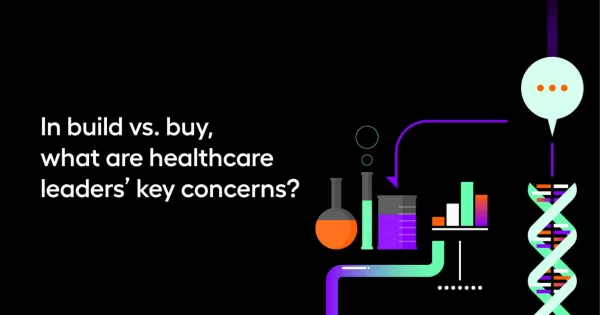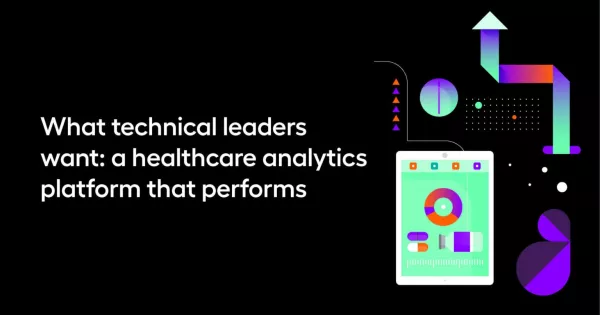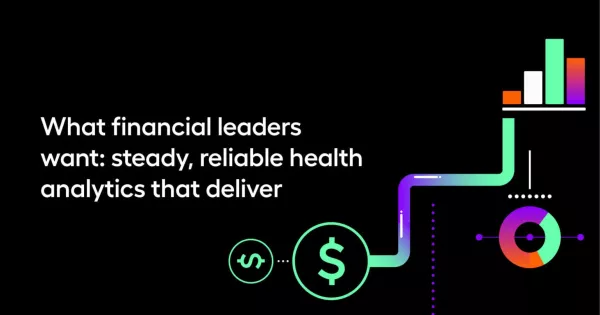Build vs. buy in healthcare IT: The battle for buy-in
In healthcare data analytics, the build vs. buy debate can carve a rift in the boardroom. When it comes time to construct your own platform from scratch or purchase something ready-made — or decide on a solution somewhere in-between — there are arguments for and against both sides.
The functionality that’s most important to a CIO is different than the top priorities of a VP of Population Health, so the ideal solution combines proficient technology with empathy, an easy interface, and continuously refined data. To find the perfect fit, healthcare systems have their work cut out for them.
Often, cost is the final deciding factor (see part one of this series for a thorough run-down of finances), but there are as many facets to consider as there are stakeholders. Here, we’ll run through the key concerns each decision-maker brings to the table, and how you can approach a solution that works for everyone involved.

In build vs. buy, what are healthcare leaders’ key concerns?
It can seem daunting, but discovering the best data analytics tools for your organization starts with identifying and understanding the decision-makers. When you take stock of who’s at the table, literally or metaphorically, you can zero in on which functions and capabilities will matter most.
Out of a bunch of job titles and descriptions — from Chief Analytics Officer to Chief Medical Officer to CEO — there are three distinct categories that relate to the build vs. buy debate: clinical, technical, and financial HealthIT leaders.

What clinical leaders want: population health analytics to power goals
Healthcare’s full of targets and hard metrics, and clinical buyers are responsible for hitting (or exceeding) these goals. Crunching numbers? Check. Constantly measuring performance? Check. Anxiety about the timeliness and accuracy of data? You bet. Think of these power players as operating at the macro level, attending to numerous levels of detail so that they can achieve big-picture goals.
Who they are: VP of Population Health, President of CIN, CMO, and others.
What they fear: A loss of control and accountability, especially from an outside vendor that’s unreliable. In-house, they rely on the IT team to produce a steady stream of information, and they have to trust that it’s robust enough to support decisions.
What they want: a less-burdened team, the ability to meet contractual goals before deadlines, trust in any outside vendor’s data quality, and a quick time-to-value ratio for implementation.

What technical leaders want: a healthcare analytics platform that performs
On their worst days at work, the technical leader is holding about five spinning plates while a stampede of employees complain about their open tickets. Hopefully that’s just the odd Monday, but keep that image in mind — the technical leader needs to monitor existing technology while incorporating anything new, without disrupting the flow of business as usual. To make room for innovation, the infrastructure that’s already in place has to be sound and run smoothly. Sound intimidating? That’s because it is, but the right data analytics solution will be productive, not disruptive.
Who they are: CIO, IT Manager, VP of Engineering, CMIO, and others.
What they fear: A new technological add-on that’ll have them up to their ears in complaints, putting out fires all day with a disgruntled team.
What they want: A solution that frees up resources, instead of consuming them! Interoperable, easy-to-use software that plays well with what’s already in place and doesn’t require frequent intervention.

What financial leaders want: steady, reliable health analytics that deliver
There’s nothing funny about losing money, especially in healthcare. The financial leader has to balance between a million new, shiny options and prudent investments in proven technology. Like the parent saying no to Oreos for dinner every night, the financial buyer is often the voice of reason, the barrier between impulsivity and thoughtful action.
Who they are: CFO, VP of Value Based Care, Risk Analyst, and more.
What they fear: A fancy, bells- and whistles technology with the price tag to match…and without the ROI.
What they want: A small, manageable group of vendors they can trust, with predictable costs. Value statements and promises are fine, to an extent, but the financial leader wants receipts — documented performance improvements for other clients, hard numbers, and a quantifiable impact.

Building coalition out of chaos
These disparate goals might seem contradictory, but think of it as a form of checks and balances — having one or more of these persona types in your board room means you’re not overlooking an important part of build vs. buy, or focusing too much on one trait at the expense of the others.
Balancing them can prove tricky, but in this series, we’ll continue to explore to key considerations on the path to the right data analytics platform. Meanwhile, whether you’re looking for value-based care analytics or a platform that can make your fee-for-service offerings more efficient, knowing what motivates each member of your team can clarify the best options (and help you eliminate those that won’t work).

Dig deeper into build vs. buy on our webinar
Arcadia’s platform is made for driving insights, with the needs of the healthcare industry and its leaders in mind. We thrive at the intersection of difficult questions, so it makes sense that we’re diving into build vs. buy, from in-house experts to our partners in the field.
Join Arcadia COO Michael Meucci and Scott Samways, Vice President Information Technology & Health Informatics at BILH, as they tackle everything from key cost considerations to board room points of contention, and the actual technology stack needed to be successful when putting data to work for healthcare.
